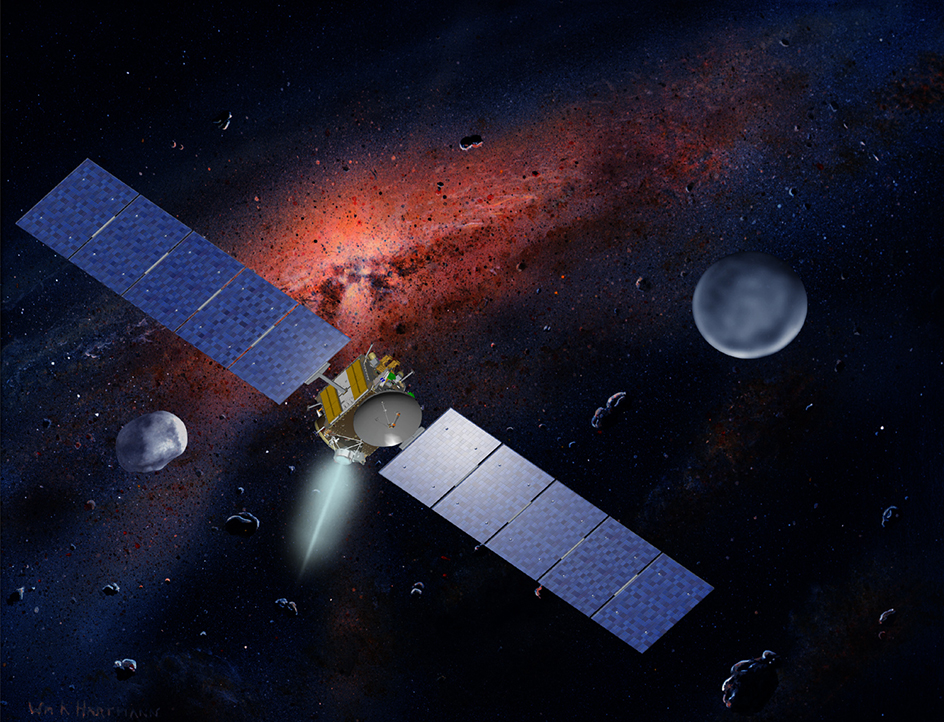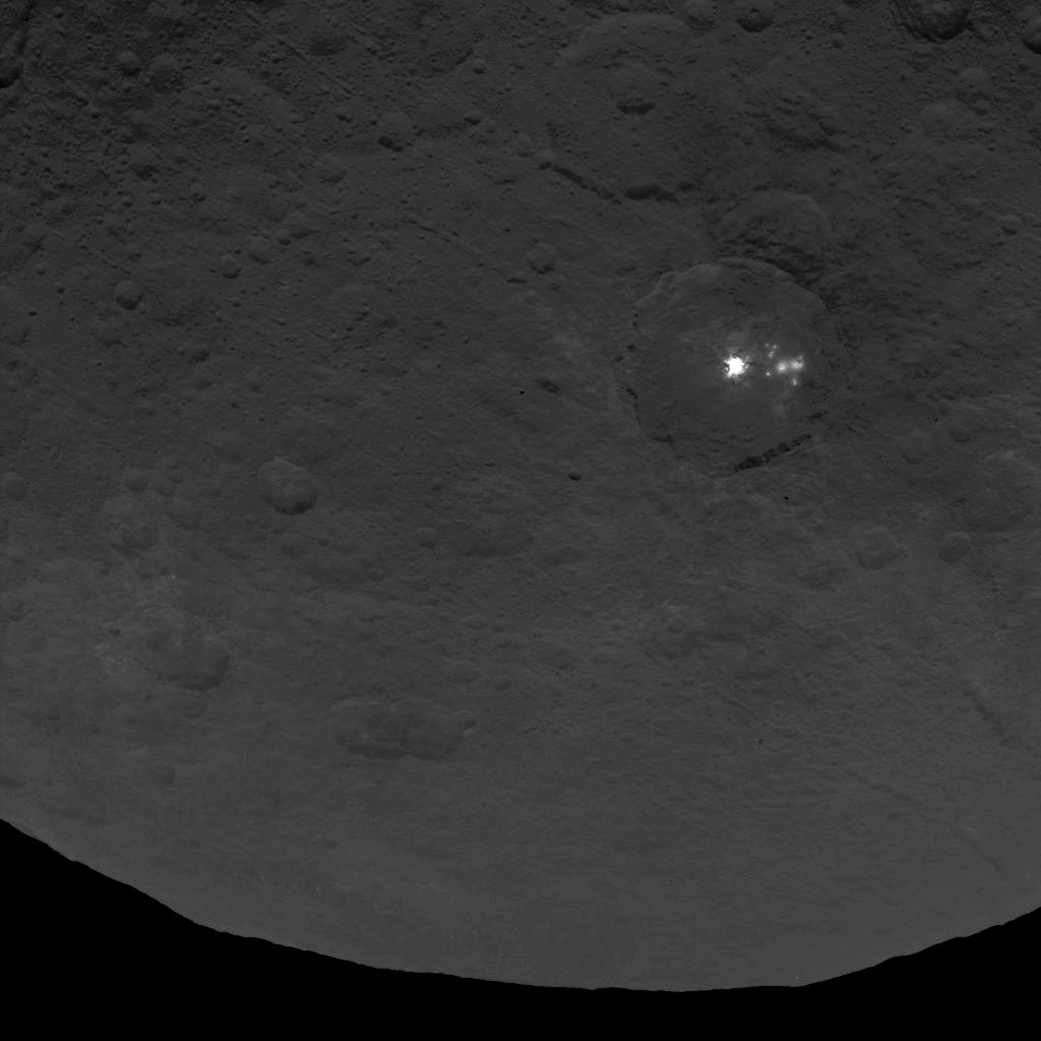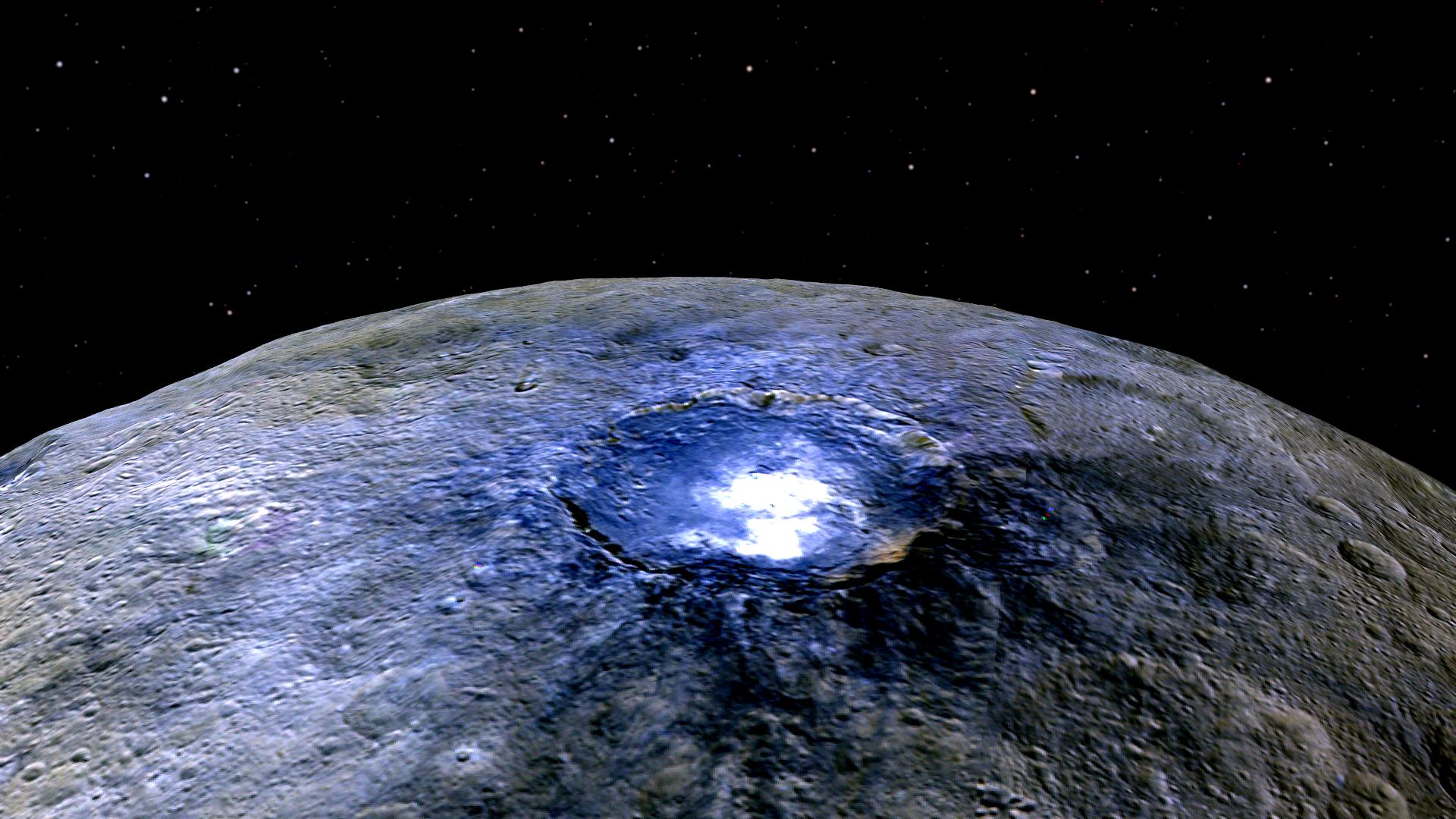Ceres << SIHR eez >> is a dwarf planet. It is also the largest of the probably millions of asteroids found between the orbits of Mars and Jupiter in a region known as the Main Belt. Ceres accounts for more than one-fourth of the total mass (amount of matter) of the Main Belt asteroids. Ceres’s shape resembles a slightly squashed sphere with a longest diameter of 605 miles (975 kilometers) and a shortest diameter of 565 miles (909 kilometers). It has a fairly smooth, rocky surface and little or no atmosphere. It orbits the sun every 4.6 years at an average distance of about 257 million miles (414 million kilometers). Ceres takes its name from the Roman goddess of agriculture.


Ceres was the first asteroid to be discovered. The Italian astronomer Giuseppe Piazzi first saw it by chance on Jan. 1, 1801, from Palermo, Sicily. He was making observations for a catalog of stars when he noticed an unknown object. Piazzi tracked the object for several weeks until he lost it in the sun’s glare. In the fall of 1801, the German mathematician Carl Friedrich Gauss predicted the place in the sky where Ceres was found again by astronomers at the end of the year.

Ceres probably formed early in the solar system’s history from many smaller bodies that collided and stuck together, a process called accretion. But scientists think the gravitational influence of Jupiter prevented Ceres from growing to the size of a planet. By studying Ceres, scientists hope to learn more about the early solar system.

Ceres has been observed venting water vapor into space. Scientists are unsure what process causes these events.
In 2007, the United States National Aeronautics and Space Administration (NASA) launched the Dawn spacecraft. After a visit to the asteroid Vesta, the craft went into orbit around Ceres in 2015.
